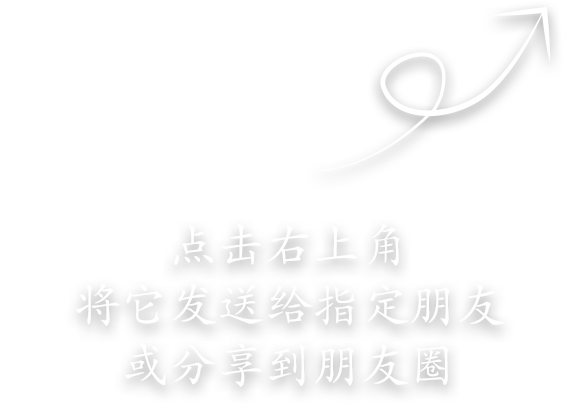




Grease wastewater treatment project
1.1 Project Background
The wastewater produced by this project is a typical oily wastewater. The characteristics of the wastewater are complex composition, high organic content, high chroma, etc., which are harmful to the environment, so it must be treated to be discharged into the water body.
The wastewater treatment plan is proposed based on the design principle of advanced and reliable treatment technology, reasonable overall layout, convenient operation and management, stable water quality and high treatment cost. In the construction of the project, we are willing to serve in good faith and contribute our technology and strength.
2. Process design
2.1 Source of wastewater
The sewage of this project is mainly the oily wastewater generated during the production process.
2.2 Major pollutants in wastewater
The wastewater discharged by the company is a typical oil wastewater, and its wastewater is characterized by complex composition, high organic content, deep color, and intermittent discharge. The wastewater is a high-concentration organic polluted wastewater with complex composition and the following characteristics:
(1) High BOD and COD content;
(2) containing a large amount of suspended matter;
(3) Contains higher oils.
2.3 Design of sewage volume, water quality and effluent standards
2.3.1 According to the feasibility study report of the company and the information provided by the plant, after the weighted average, the water quality parameters of the wastewater station in this design plan are determined as follows:
Table 1 Water quality and water parameters
NO. | ITEM | Parameters of inlet |
1 | BOD5(mg/L) | 3500 |
2 | CODcr(mg/L) | 8500 |
3 | Oil(mg/L) | 75 |
4 | SS(mg/L) | 30 |
5 | PH | 7 ~9 |
Capacity(t/d) | 120 | |
2.3.2 Water output standard
The treated wastewater quality can meet the requirements of GB8978-1996 "Comprehensive Wastewater Discharge Standard", specifically:
Table 2 Designing water standards
NO. | ITEM | Parameters of outlet |
1 | BOD5(mg/L) | 20 |
2 | CODcr(mg/L) | 100 |
3 | OIL(mg/L) | 10 |
4 | SS(mg/L) | 20 |
5 | PH | 6 ~9 |
2.4 Wastewater treatment process selection
2.4.1 Process comparison
The biochemical treatment of sewage has contact oxidation and activated sludge method. The biochemical treatment should adopt the process of convenient operation and management and low operating cost. Compared with the activated sludge method, the contact oxidation method has the following advantages:
(1) Due to the large specific surface area of the filler, the oxygenation conditions in the tank are good, and the amount of biosolids per unit volume is high. Therefore, the biological contact oxidation tank has a high volumetric load;
(2) Due to the large amount of biosolids in the biological contact oxidation pond and the complete mixing of the water flow, it has a strong adaptability to sudden changes in water quality and quantity;
(3) The sludge system does not need to be recirculated, the operation is simple, the energy consumption is reduced, and the operating cost is low;
(4) There is no sludge expansion problem, the operation and management is simple, and the amount of excess sludge is small.
2.4.2 Determination of the process of sewage treatment system
According to the above-mentioned wastewater water quantity and water quality, based on the treatment experience of similar wastewater treatment projects, it is determined that the sewage treatment station adopts the main treatment process of “physicochemical + biochemical”. In the biochemical treatment stage, the A/O method becomes the preferred process for our biochemistry.
According to the characteristics and nature of the sewage, combined with the sewage treatment objectives, and our long-term research and engineering application cases of the sewage treatment process, combined with the original sewage treatment process, determine the use of "oil separation + regulation + air flotation + biochemical" method.
The biochemical process uses an anoxic + aerobic biofilm process, the A/O process.
The A-stage pool is also called an anoxic tank, or a hydrolysis tank. The mechanism of hydrolysis From the chemical point of view, most of the compounds will undergo hydrolysis reaction when contacted with water under certain conditions. The hydrolysis reaction can change and break the covalent bond even if the compound changes in molecular structure and morphology. Biohydrolysis relies on the catalytic action of biological enzymes to accelerate the reaction. The catalytic reaction rate under enzyme conditions is 108-1011 times higher than that without enzyme. Biohydrolysis refers to the reaction of complex organic molecules with water in anoxic conditions, which is decomposed into simple compounds due to the participation of hydrolase. The biohydrolysis reaction actually includes two stages of hydrolysis and acidification. Acidification can degrade complex organic matter. For simple organic acids.
The O-stage pool uses a contact oxidation process. The biofilm method has good denitrification and denitrification function, good hydraulic conditions, strong anti-shock load and high biological concentration, which can be suitable for the growth of digestive bacteria with a long generation time. Under the same operating conditions, the biofilm system treatment effect is better than the activated sludge system, and its CODCr, BOD5 and grease removal rates are 97%, 99% and 82%, respectively. When the same pollutant removal rate is achieved, the operation and management of the biofilm system is more convenient, and some problems of the activated sludge system are overcome. For example, the method does not have the problem of sludge loss, and it is not necessary to provide a stirring device. Denitrification effect, and there is no sludge floating phenomenon. It has the following advantages:
(1) The biofilm method has biological diversity. Due to the growth of microbes on the surface of the filler, it has stable ecological conditions and can inhabit bacteria such as nitrifying bacteria. Its proliferation rate is 40-50 times slower than that of common Pseudomonas, so the biofilm method can be very high. Nitrogen removal capacity. In terms of biological species, the biofilm method is much richer than the mud method. In addition to bacteria, protozoa, fungi, algae, metazoans and large invertebrates, which are rare in mud methods;
(2) The biofilm method has a large amount of biomass, and the biomass per unit volume is sometimes 5 to 20 times larger than that of the mud method, so the processing capacity of the device is large;
(3) The amount of excess sludge in the biofilm process is small. In the anaerobic layer of the biofilm, the anaerobic bacteria can degrade the excess sludge synthesized by the aerobic process, so that the total amount of excess sludge is greatly reduced;
(4) Membrane operation and management is convenient. It does not require sludge recirculation. Therefore, it is not necessary to strictly control the amount of return sludge and excess sludge, and there is no sludge expansion and sludge loss which are common in activated sludge process. Stable, but also indirect operation, the recovery is faster, the impact on the fluctuation of organic load and hydraulic load is less, and the effluent water quality is relatively stable;
(5) Since oxygenation is directly aerated under the filler, the bubble is broken again by the filler to increase the oxygenation efficiency, so the power consumption is smaller than the activated sludge method.
The sewage is removed from the biological contact oxidation tank by 80-90% of the CODcr, so that the effluent reaches the discharge standard.
The A/O process not only goes to BOD5, but also has good nitrogen removal. The sewage enters the O section after passing through the A section, and the organic matter is oxidized and decomposed by aerobic microorganisms in the aerobic section. The ammonia nitrogen is converted into nitrate nitrogen by nitrification under aerobic conditions, and then flows back into the anoxic section through the mixed liquid. Under the condition, pre-denitrification is carried out to convert nitrate nitrogen into molecular nitrogen and escape into the air, so that ammonia nitrogen can be effectively removed, and a good effect of simultaneously removing BOD5 and denitrification is achieved.
The A/O process has the following advantages:
(1) The A-stage process can make the macromolecules and refractory organic matter in the sewage become small-molecule organic matter, which can open the chain and open the chain, thereby increasing the BOD5/CODCr ratio and improving the biodegradability of the sewage;
(2) The stage A process can also complete denitrification at the same time. The oxygen in the nitrate nitrogen can oxidize and decompose the organic matter in the sewage, so that the removal rate of BOD5 in the A/O process is much higher than that of the ordinary activated sludge method;
(3) Impact resistance load and stable water discharge;
(4) The A/O method has a short process flow and simple operation management.
Due to the strict effluent requirements of this program, ensuring ammonia nitrogen and COD compliance is the focus of treatment.
2.6 Process Flow Brief
The waste water first passes through the grease trap, and the oil in the water is separated from the surface of the pool. After the fish is cleaned, the lower layer of wastewater flows into the regulating tank. After the water quality is uniform, the pump is pumped into the air floating tank through the lift pump, and the PAC is added. PAM produces mixed flocculation, and the lower layer of clean water flows into the A/O system. The COD in the wastewater is removed by the anoxic-aerobic biochemical reaction. The A/O system effluent enters the secondary settling tank, and the solid-liquid separation and separation are carried out by gravity. After the filter is filtered through the filter, it is finally discharged into the urban sewer pipe network to discharge the standard.
The upper scum generated by air flotation and the bottom sediment of the secondary sedimentation tank enter the sludge drying field, and are dried and transported to a qualified unit or associated coal for combustion.
The air required for the O pool is provided by a blower + aerator.


